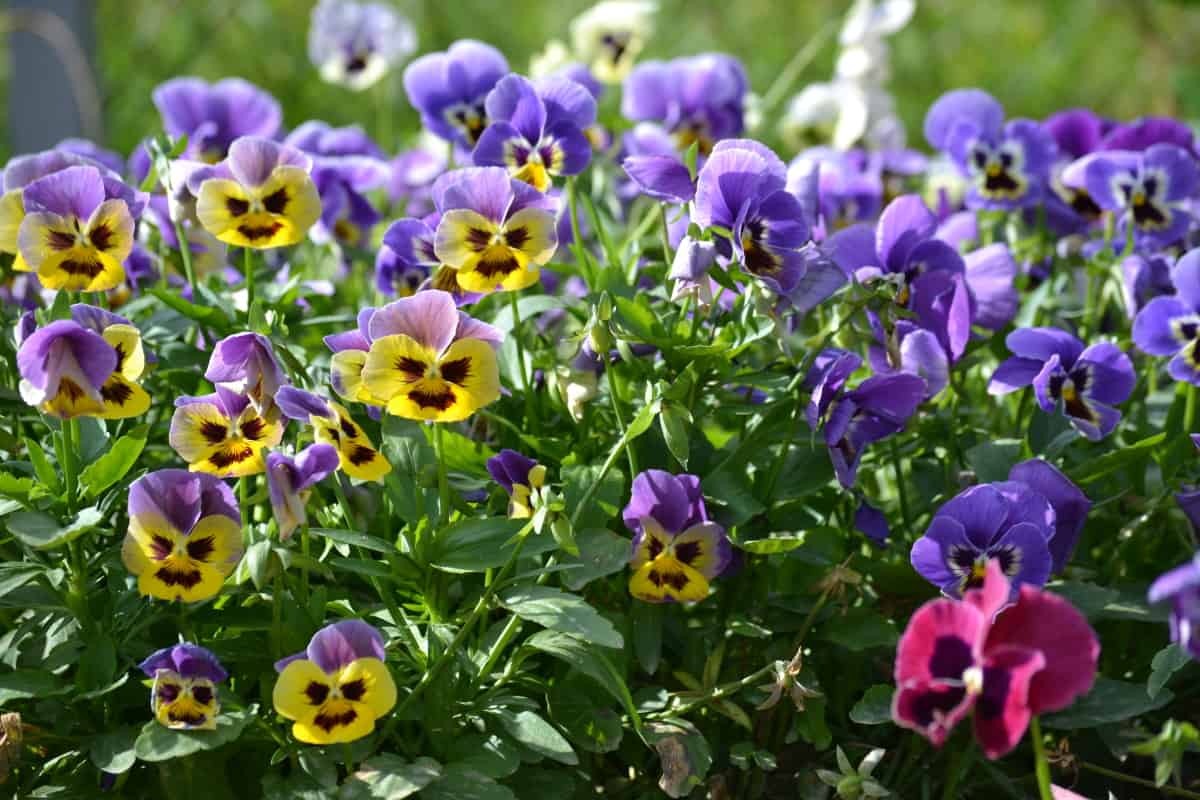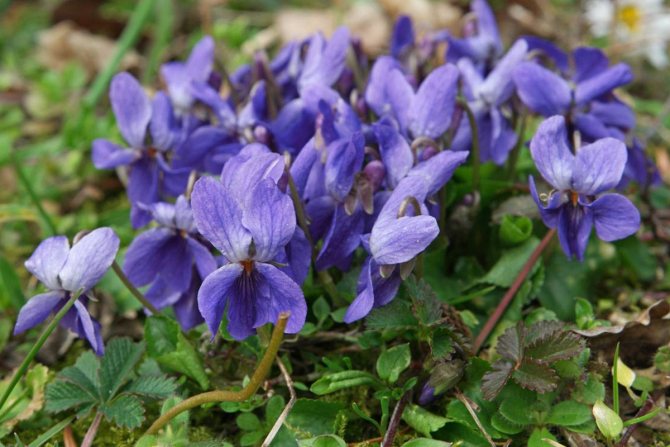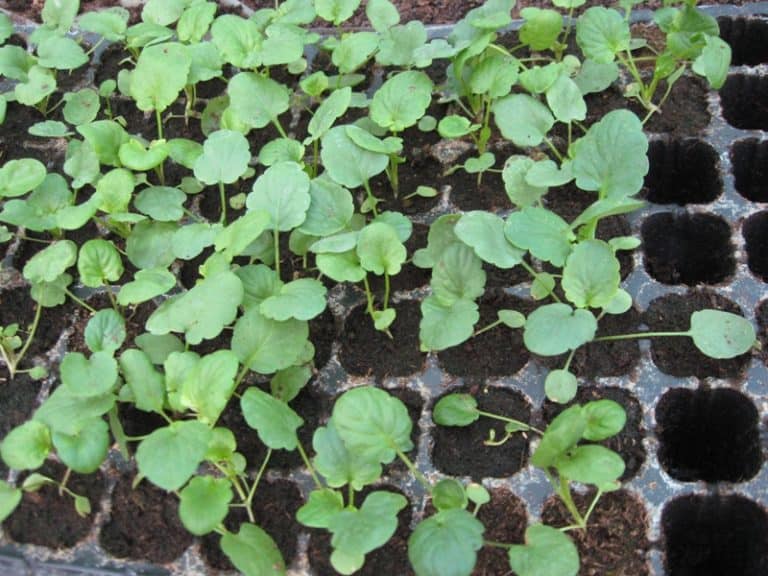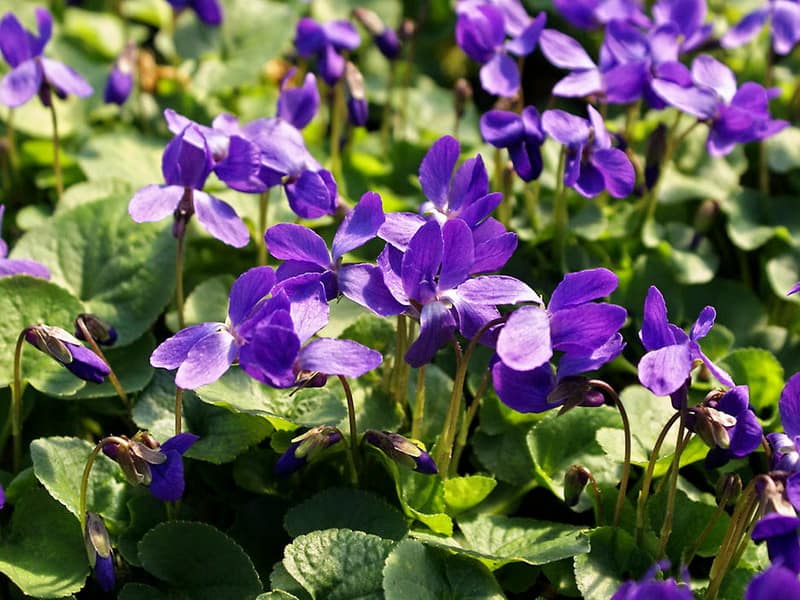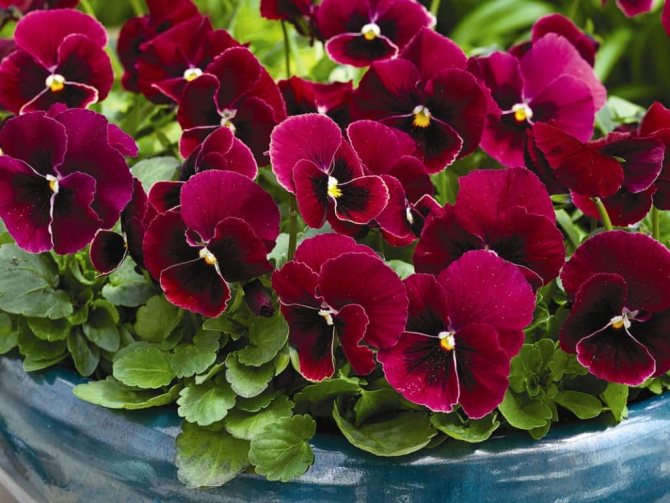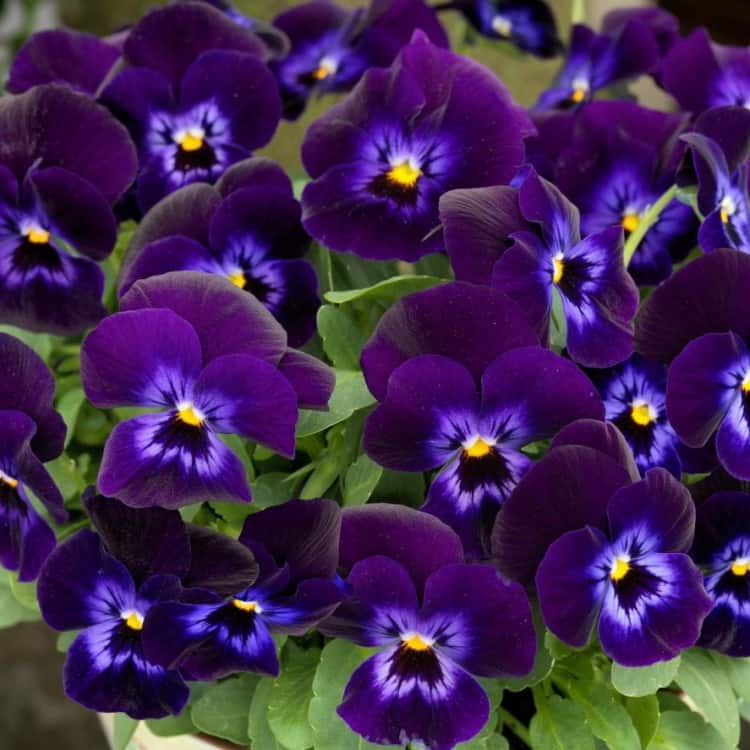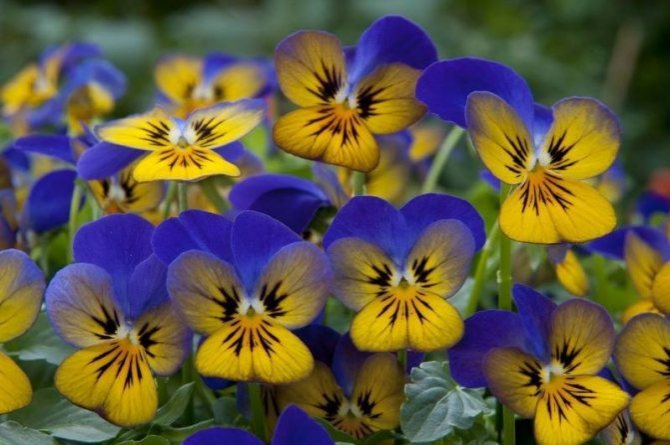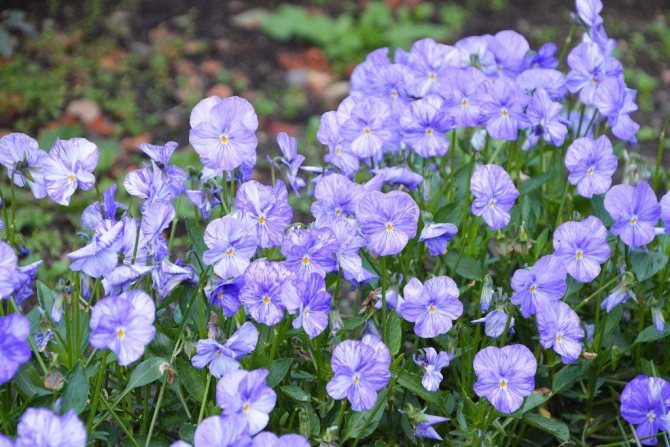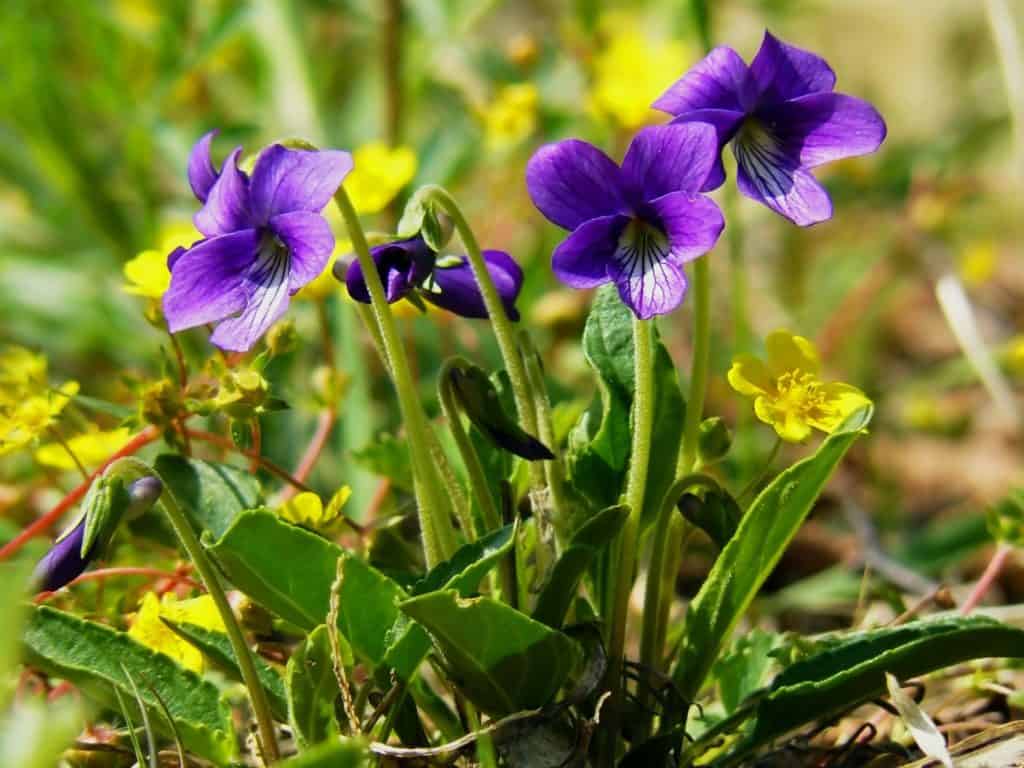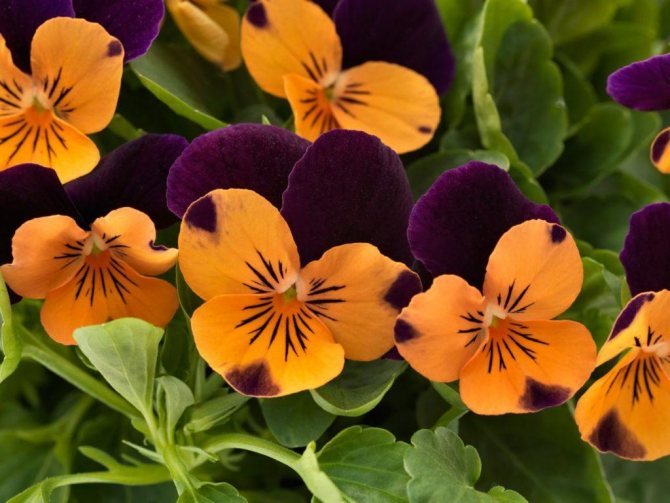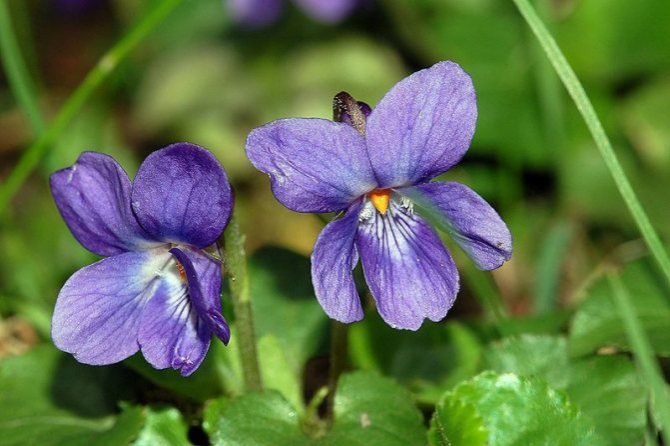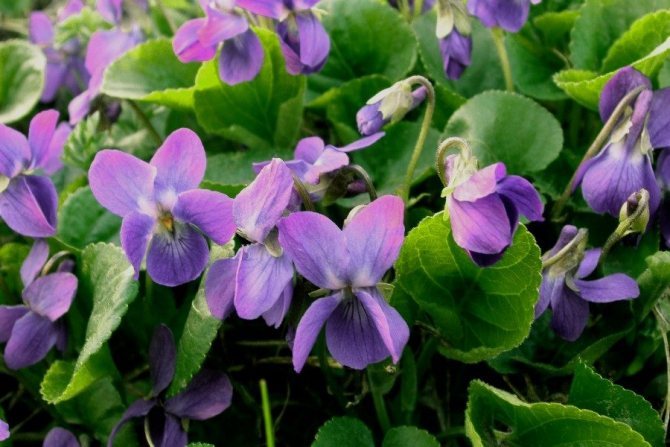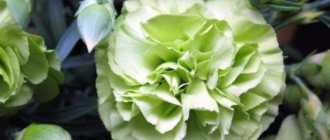Self-seeding, touching, wild, charming, perennial, biennial or annual violets never go out of garden fashion. Even the best species and varieties that have passed a careful selection, still remain a little "untamed" plants, bring the natural charm of the wild to any garden. Violets in any quality and any role are a great decoration for the spring season. Their beauty is surprisingly combined with the ease of growing (any violets are so easy to propagate).
Fragrant violet (Viola odorata). <>
Perennial garden violet
Unlike the usual pansies that bloom in early spring and leave with flowers under the snow, perennial garden violets delight us with abundant and lush flowering only in the spring, in summer they lose their decorative effect due to the abundance of seed pods. Timely removal of wilted flowers will help prolong flowering. Usually, fragrant violets and horned violets are grown as perennials.
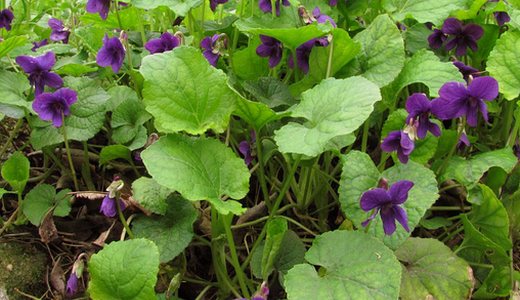
1. Fragrant violet (Viola odorata) - unpretentious perennial garden violet, very fragrant plant about 15 cm tall. Stems are creeping, easily rooting, heart-shaped leaves are collected in bunches. Flowers about 3 cm can be single or double, usually blue or purple in color. The aroma intensifies in the evening. It is rather difficult to grow from seeds; preliminary stratification is required. Seeds for planting need fresh seeds for good germination.


2. Violet horned (Viola cornuta) is a perennial plant about 8-20 cm in height. Flowers of this species are characterized by the presence of "spurs" in the back of the flower, although not all varietal plants have it. The diameter of the horned violet flowers is from 1.5 to 3.5 cm, the color mainly has a white-yellow-blue range, however, modern varieties and varieties are very diverse. Among producers of seeds and seedlings, it is customary to cut the horned violet into two assortment groups - Viola Cornuta and Viola x hybrida (V. hybrida (x cornuta)). The second group has a more complex hybrid origin, being a hybrid of the horned violet and other species. Hybrid forms tolerate the winter worse, they are often grown as biennials.
Perennial violets in the garden
In the garden, violets are used to decorate flower beds and ridges, borders, alpine slides. Violets feel good among trees and shrubs, near water bodies. They make beautiful flower rugs. Suitable for growing in a variety of garden containers, flowerpots and balcony boxes. It is good to plant a fragrant violet near resting places and in the front garden in front of windows. Violets are suitable for forcing in winter. Various baskets with these amazingly delicate romantic flowers look very beautiful.
Perennial garden violets. Growing
The perennial violet garden prefers sunny or slightly shaded places, rich, moist, but well-drained soil. Violets, despite the fact that the plants are moisture-loving, do not tolerate excess moisture and can easily die during the spring thaws. Care consists in timely watering and feeding with complex mineral fertilizer 2-3 times per season. For the winter, it is better to cover with a dry leaf or spruce branches.
Perennial garden violets are propagated by seeds, cuttings or dividing bushes. Seeds are sown in open ground in June or before winter.Violets reproduce well by self-seeding. Violets are planted permanently with a distance between plants of about 30 cm.
In the language of flowers, Violet - MODESTY, DIGNITY, INNOCENCE, SECRET LOVE
Botanical description of the plant
Plant classification:
- name: Horned violet (Víola cornuta);
- a type: herbaceous perennial;
- natural distribution area: Pyrenees;
- family: Violaceae;
- plant height: 15–20 cm;
- flowering time: from April to June.
Horned violet is represented by large clusters of low flowers of lilac, lavender or blue with silvery-green ovoid leaves. She is a typical inhabitant of alpine meadows with a growth height of 1000-2000 meters above sea level.
The plant has a fibrous, fibrous root system with a depth of 15–20 cm. The main shoot is erect. The creeping shape of the stem promotes rapid spread to unoccupied areas.


Violet flowers are solitary, located on long peduncles. The upper petals have "claws", the lower ones have a sac-like formation at the base, which is called a "spur". The flower consists of 5 petals and a yellow center. Leaves can be simple or pinnately dissected, about 4 cm long. They form a "loose" rosette.
The main feature of the horned violet is the shape of the flower: the back side of the bud bends and resembles a horn in shape, which is what determined the name. After flowering, a seed capsule is formed.
Important! The collected seeds retain the ability to germinate for 2 years.
In landscape gardening design, the horned violet is used to decorate the boundaries of sites and draw up natural flower beds. The basic requirements for the site for planting: good lighting and lack of soil moisture.
Fragrant violet: growing rules
Fragrant violet is a herbaceous plant, one of the first to bloom in gardens and flower beds when spring warmth comes. It is a perennial flower that perfectly tolerates harsh winters. With its bright colors, it pleases twice a season: first, throughout April-May, then the flowers bloom again at the end of July-August.
Fragrant violet in the photo seems inconspicuous. In fact, this unpretentious restoration will captivate with its aroma.
In order for the flowers to fully reveal all their possibilities, it is enough to comply with several conditions:
- Violet loves sunny places. It is the warm and bright rays that are the key to abundant flowering.
- If the plant is planted in the shade, care must be taken not to be attacked by slugs. This is especially true after heavy rains, when the humidity rises sharply.
If you have already chosen the ideal place for the violet and planted it, it remains to provide it with optimal care:
- Violet loves mineral fertilizers, it is enough to please her with dressings once a month.
- It is better to refuse fresh organic fertilizers.
- To prolong flowering, you need to regularly pinch off wilted inflorescences.
- For the winter, the plants are best covered. For this, spruce branches are enough.
The main care of the violet is carried out by nature itself. During especially dry periods, additional watering can be provided, but usually natural rainfall is sufficient.
Seeds are the main breeding method for violets. It should be borne in mind that they very quickly lose their germination, therefore, collected independently, they must be planted in the ground within two weeks. This is usually done at the end of August. In this case, the first shoots will appear in early spring.
The next step is picking seedlings. They are placed at a short distance from each other - about 5 centimeters. So they will grow until the end of August, after which you can place flowers in a permanent place.
If the seeds were purchased in a store, you need to start working with them in February. It is carried out in several stages:
- First you need to carefully prepare the soil.It is best to take nutrient soil for seedlings, peat, charcoal, perlite in a ratio of 2: 1: 1: 1.
- The soil must be placed in boxes, carefully leveled, moistened, sprinkled with seeds on top and covered with foil.
- After about 4 weeks, seedlings will appear.
- Seedlings dive after the appearance of the first leaf.
- They are planted in the ground at the end of August.
If everything is done correctly, the violet will delight the eye with bright inflorescences for a long time.
Application in landscape design
The horned violet is also a popular garden decoration element. The plant is planted in a group, since the flowers are small and one by one they can be lost. If you plant perennial violets in a group, then during flowering, their numbers will create the feeling of a real spring holiday.
The best solution would be to grow horned violets in front of evergreens such as juniper or cypress. It is also a great solution to plant perennials in the foreground of flower beds with roses, hyacinths or daffodils. In addition, fragrant violets that do not like excessive heat will perfectly set off tall conifers. Viola cornuta also looks great in borders and single-species flower beds, in pots and pots on the home balcony.
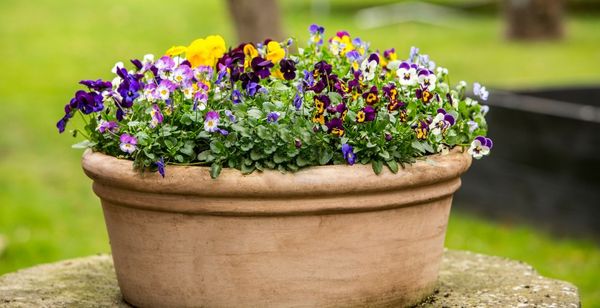

It is thanks to its unpretentiousness that the odorous horned violet got on the balconies and in the apartments of our houses, where, with simple proper care, it grows and develops beautifully.
Garden violet
The garden violet is a perennial herb, cultivated as a biennial. The leaves are arranged in sequential order or collected in a basal rosette. The violet has white, yellow, blue, red flowers.
In Russia, the garden violet is often called pansies. In different countries, you can hear different versions of the name of this flower, one of which is Viola.
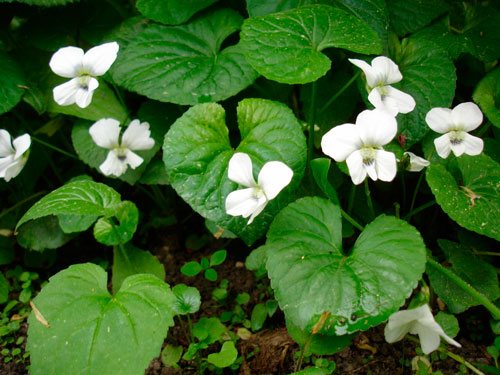

Varieties and hybrids
Perennial horned violet is represented by a huge number of varieties, species and hybrids bred over the past two centuries. Many homeowners use single-color varieties for planting designer flower beds, for example, Tsar or Queen Charlotte. Others prefer colorful varieties such as Felix or Sunbeam for indoor or garden cultivation.


Currently, more than 25 varieties of perennial violets have been bred by botanists.
Perennial violets
Propagated by sowing fresh seeds in the ground in the fall. Seedlings appear in the spring the next year. Can be propagated by dividing the bush and cuttings. It is not advisable to cultivate more than three years without dividing, since the bushes grow abundantly, lose their compactness, and the volume of flowers decreases.
Violet prefers sunny places. In shady and humid places, the violet often suffers from slug pests. It grows and blooms best on rich, moisture-rich, well-drained land. In dry weather, watering is required, otherwise the flowers become smaller, and the violet stops blooming.
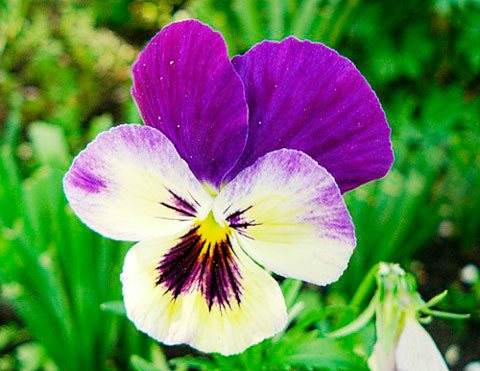

If the seed pods are not eliminated, then the violet will give abundant self-seeding. Its shoots appear in the fall or next spring. If the seedlings are planted in a timely manner, then the violet can grow in the garden without special crops. Catching up wilting flowers will help you keep the flowers blooming. It is also necessary to carry out periodic fertilizing with mineral fertilizers. In severe winters, the violet needs light cover with protective material or tree foliage.


Violet is used in flower beds, mixborders, borders, on rocky hills, in vases and for landscaping loggias. Can be used for forcing. From autumn, the plants are planted in pots, kept in a cool room until mid-October, and then taken out to a cool greenhouse with a temperature of 7-9 ° C.
When the violets start to grow, they are placed closer to the light, but away from the heat source, and they begin to water well, moisten them with warm water.They begin to bloom in a month.
Violet is one of the oldest horticultural crops. Already about 2,400 years ago, the ancient Greeks and Romans weaved violets into wreaths and garlands to decorate their premises on holidays and dinner parties.


Fragrant violet was one of the first in European monastery gardens, then mountain violet. The first mention of it in the botanical garden of the Scottish city of Edinburgh dates back to 1683. Botanists got acquainted with the two-flowered violet back in the 16th century. Only a couple of centuries later, the famous English florist and florist F. Miller began to cultivate it.
At the end of the 18th century, the Russian botanist P. S. Pallas, who studied the flora of Altai, first brought the now widely known Altai violet to St. Petersburg. And then the first American violet - glomerular - appeared in culture in Europe.
Finally, at the beginning of the 19th century. Europeans got acquainted with the very same pansies - the hybrid violet Witt rock, which combines all the beauty of the Altai, tricolor and yellow violets, which we still admire.
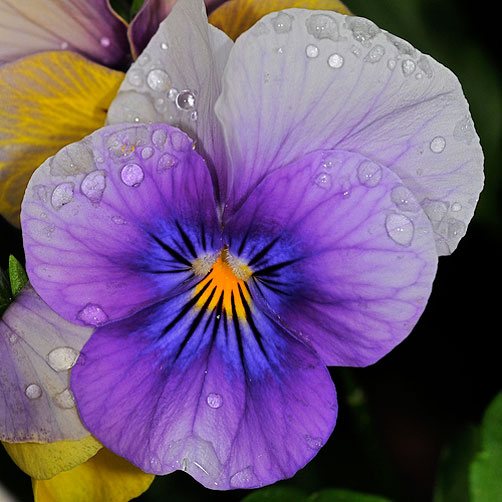

Annuals
The root system of annual violets is fibrous, that is, there is no main root, but there are a great many small roots. They penetrate the top layer of the soil with a wide network and do not go deep into it. Branched stems, on each branch usually several flowers open. The flowers of the annual are very large, reaching 10 cm. The annual garden violet is a neat decorative shrub up to 20 cm in height.
The most popular are the following types of peers:
- Chalon Supreme is a series of varieties with ruffled seven-centimeter flowers of extraordinary beauty.
- Rose Shades is a cultivar with pale pink petals and a purple center spot.
- Cherry Pie Mix - purple or maroon flowers with a white border.
- Flame is a variety with fiery red flowers bordered with orange edging.
- Cats is an interesting series of strains. It differs in that in the center of the flower you can see a pattern similar to a cat's face.
- Jema is a series specially designed for hot regions.
Varieties
Although violet plants can be colored in different ways, growers prefer white violets, as they are extremely decorative and graceful. Below are the most popular varieties of white violets.
"EK-White Queen". This variety of violet culture has snow-white flowers with wavy petals. On the room windows, the flower looks beautiful and graceful. The rosette has a standard size, the buds are seven cm in diameter. The peduncles are elongated, for this reason they cannot hold large flowers on themselves, and they often droop. The plant blooms for up to 2 months, and the life of each bud is 2 weeks. A large number of buds are formed, in this regard, when they completely bloom, they cover the outlet as if with a blanket. The rosette of the variety is quite large, it is twenty-five cm across (slow-growing), the leaves are colored green, in addition, their upper side is shiny. The leaves are pointed. The variety grows well, it can produce varieties of pink violets.


"Snow lace". This is a small bush with corrugated leaves and flowers of a snow-white terry structure, which have specks of a pale blue hue. When a flower is actively blooming, it turns into a bunch, characterized by incredible splendor, numerous inflorescences are located on it. Leaves are medium in size, in the form of a semicircle.


"Aly's Blizzard Bunny". One of the most popular varieties of indoor violets, because its appearance is very elegant, but at the same time simple. The snow-white buds resemble water lilies. The rosette is lush, it is formed by leaves in the form of hearts, painted in a rich green color.
"The bride's bouquet".The inflorescences form large petals, arranged in the form of an asterisk. Snow-white flowers are located above the rosette, which is formed by large shiny dark green leaves. In appearance, this flower looks like a real bridal bouquet.
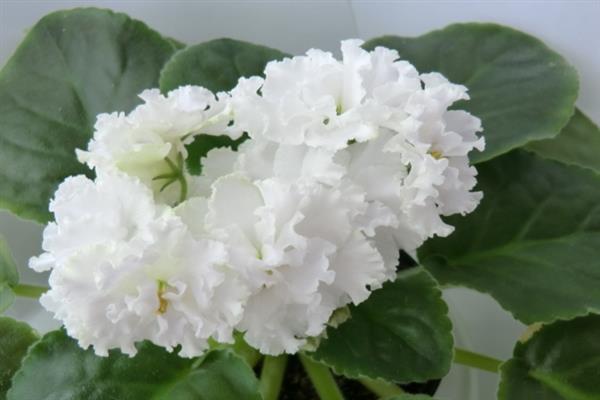

Breeding features
There are several ways to propagate a violet on the site. After flowering, seeds are formed on it, which themselves are scattered to a distance of 5-5.5 m. They germinate, and the next year flowers form on the bushes.
Note! The signal that the seed pod is ready to open is when it is turned over.
Another breeding method is dividing the bush. Children grow around the adult plant, which can be separated and planted on the site. It is also easy to spread the violet with layers, pinning them and covering them with earth. After rooting, young bushes are separated, planted separately.
Reproduction of violets at home and on a personal plot


Seeds are planted in seedling boxes with a light soil mixture in the spring, in April, or in the fall, in October. You can wait for shoots in 4-5 weeks. When a pair of real leaves appear, the violets dive and are planted in separate pots. To grow perennial horned violets on a balcony or flowerpot, young plants are planted in prepared containers with a drainage layer and loose nutrient soil.
Violets that have developed at home are transferred to the garden at the end of summer, so that the plants have time to acclimatize before the onset of cold weather. Strong rosettes begin to bloom already in the first year, and the mass appearance of buds should be expected after wintering.
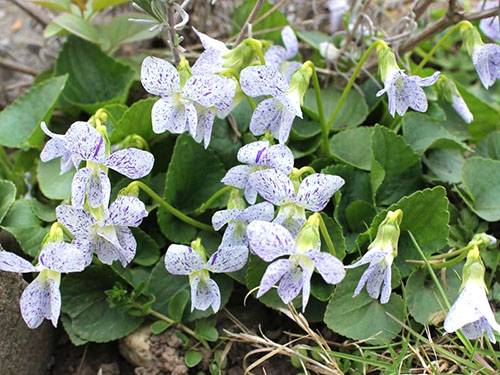

To obtain a dense, beautiful violet meadow per square meter, depending on the variety, from 20 to 30 plants are planted.


